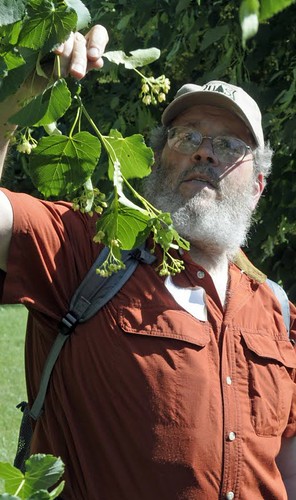
How does a former dancer and theater technician end up in a career in forestry? Meet Mark Twery, a supervisory research forester on the Northern Research Station in Burlington, Vt., who is not only all of the above, but loves his unique job that incorporates forestry with dance.
Twery had a natural inclination toward the arts. His father was a painter while his mother continues to paint, and both of his siblings are artists in different respects. As a child, Twery toyed with the idea of becoming an artist himself.
Entering college thinking he would embark in mathematics, Twery quickly realized he preferred theater arts. During his junior year, he spent a semester working at a theater in New York City.
It was during a trip home to Virginia when Twery realized that he had been away from nature for too long.
“I went outside and I heard a strange noise above my head,” he said. “I looked up and saw a cardinal singing. I am a birder but did not recognize that bird song. That’s when I decided that I had lived in the big city for too long.”
This “wake-up call” led to Twery’s departure from theater in New York City to a brief career in woodworking in Boston.
“It was good work, but I didn’t earn enough and again I began getting tired of living in a city,” he said.
Twery returned to school intending to study wood technology, but instead entered the forestry master’s program at the University of Massachusetts. A Ph.D. soon followed as did a career with the Forest Service.
Several years ago, Twery and his wife attended a dance performance in Burlington that weaved art and science. Fascinated by this connection, Twery, as a Forest Service liaison at the Northern Research Station, began working with the dance company to create the Moving Fields Project that incorporates dance to teach elementary school students, primarily city youth, about nature and ecology.
During a typical Moving Fields Project session, Twery and dancers lead the young students to a nature area where they create movements based on what the children see or hear, such as “seeds floating off into the wind, or bark sliding off a dead tree or stepping into a pond and pulling your foot back.” Once Twery accompanied a group of inner city children from Baltimore on a Moving Fields session in a natural area, and at the end of the day, the elementary school students performed an ecological dance for their teachers and parents.
Being able to combine his love for dance and forestry is one big reason Twery loves his job.
“It really is true that artists and scientists follow the same steps of observation, analysis, interpretation, and communication,” he said. “It feels like I’m going full circle in my career by connecting visual and performing arts with forestry, ecology and the environment.”
See what else Twery has to say in the Forest Service special feature Faces of the Forest, a bi-weekly feature of the Office of Communication to showcase the people, places and professions within the agency.
